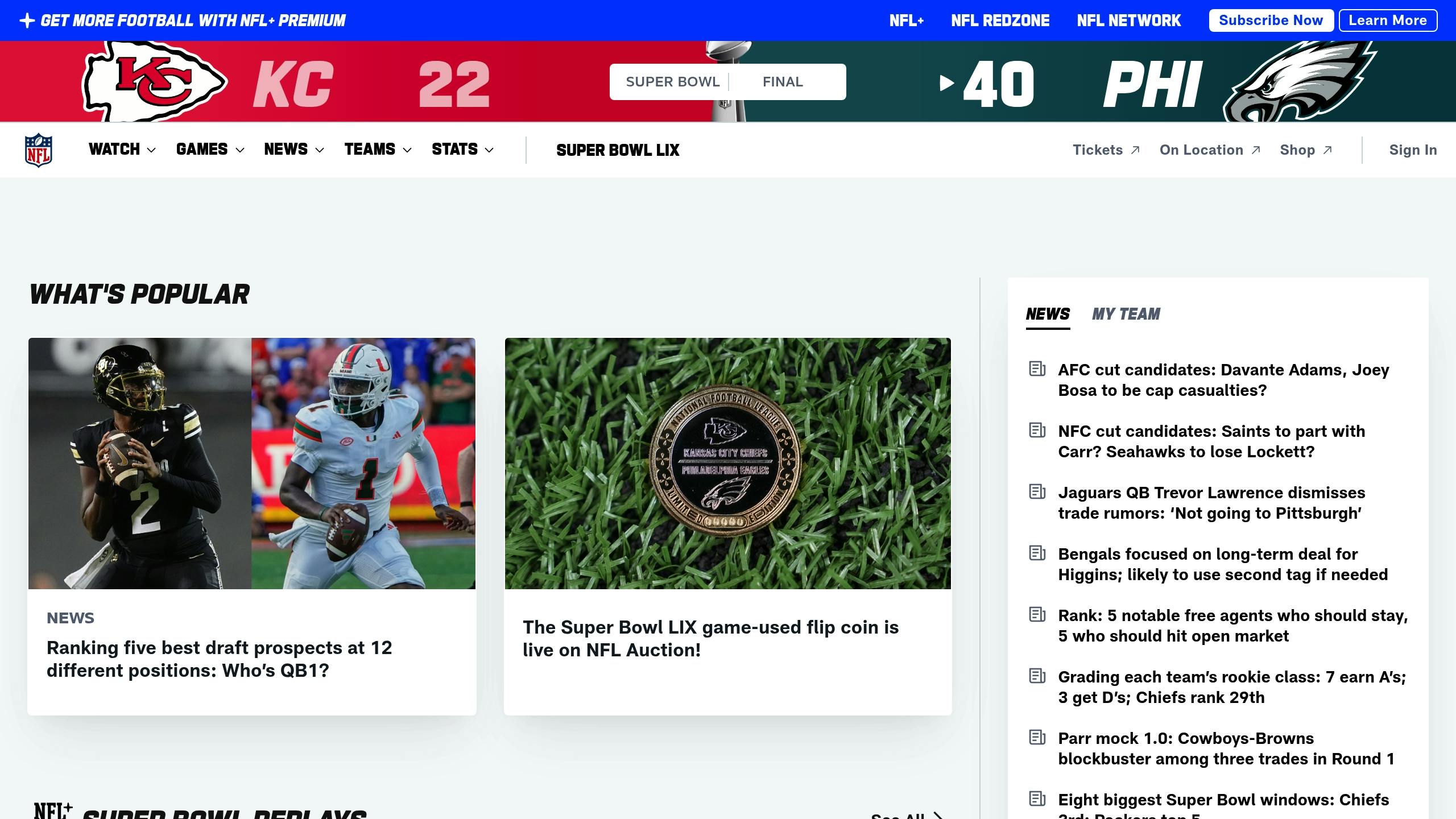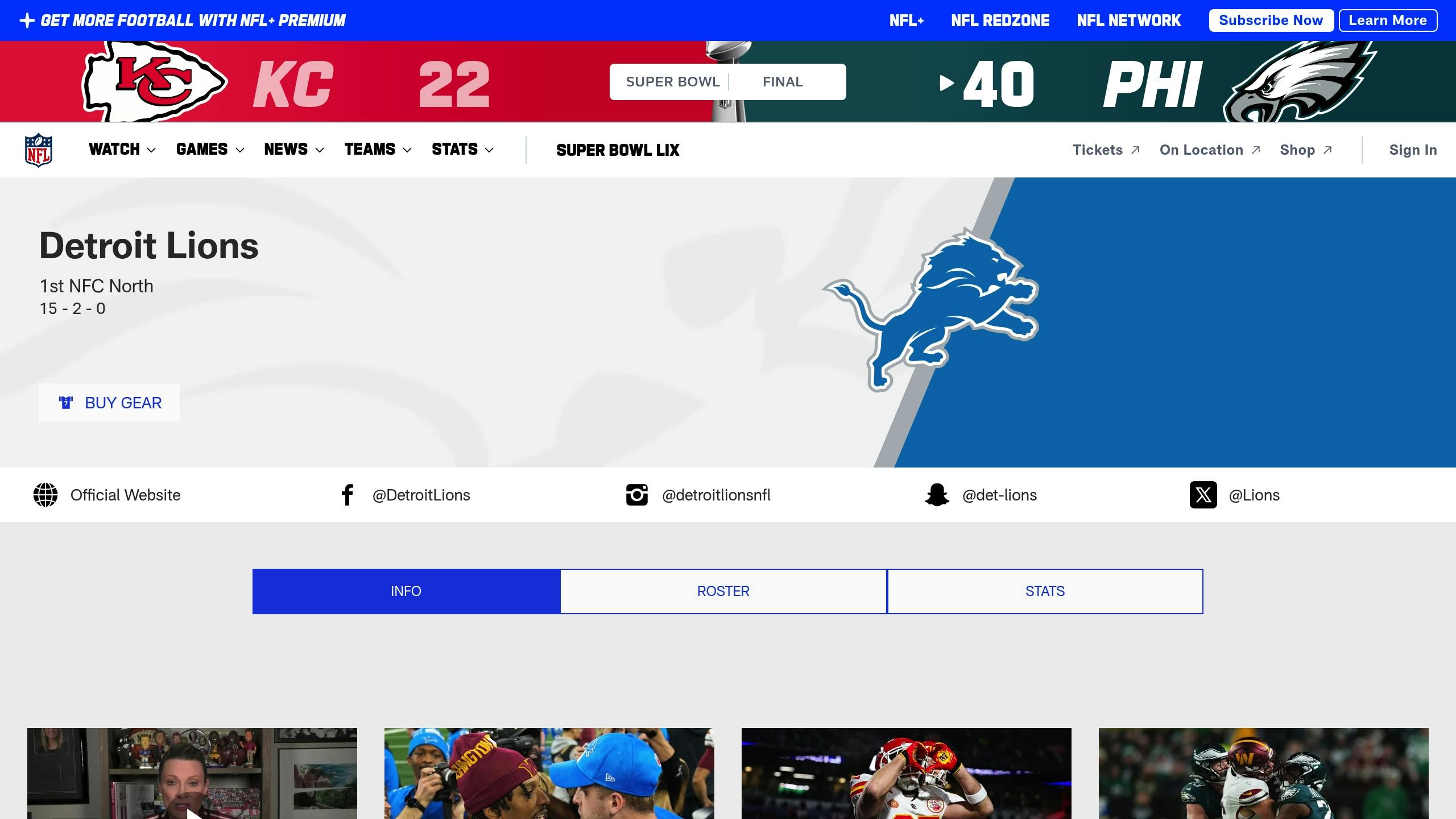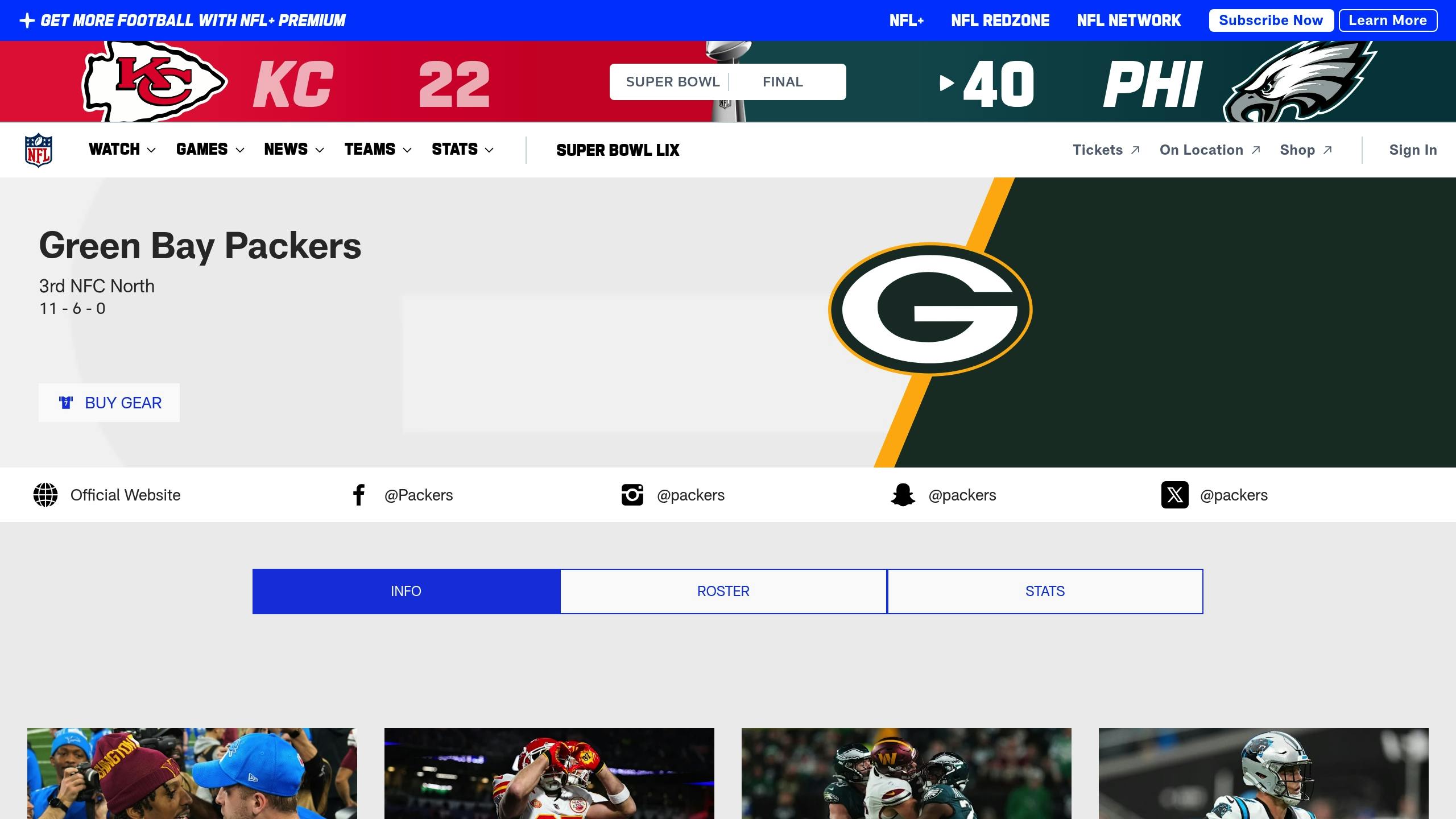NFL trivia is a fun way to challenge your knowledge of football history, iconic plays, and unforgettable moments. Here’s a quick look at some of the most intriguing NFL facts covered in this article:
- First 0-16 Season: The 2008 Detroit Lions were the first team to finish a 16-game season winless.
- The Immaculate Reception (1972): Franco Harris’ game-winning catch for the Steelers remains one of the most debated plays in NFL history.
- The Nigerian Nightmare: Christian Okoye dominated the 1989 season as the league’s leading rusher.
- All-Time Sack Leader: Bruce Smith holds the record with 200 career sacks.
- Most-Watched Halftime Show: Katy Perry’s Super Bowl XLIX performance drew 118.5 million viewers.
- Mandatory Helmets: In 1943, the NFL required all players to wear helmets, revolutionizing player safety.
- Baseball Parks as NFL Fields: Teams like the Bears and Steelers once played in MLB stadiums, creating unique challenges.
- Legendary Jersey Numbers: Numbers like 12 (Tom Brady, Terry Bradshaw) and 00 (Jim Otto) carry rich stories.
- Tom Brady’s 7 Super Bowl Wins: Spanning two decades, Brady’s championships cement his legacy.
- Packers’ Public Ownership: The only NFL team owned by fans, with over 537,000 shareholders.
Each section dives deeper into these moments, offering fascinating insights into the NFL’s history and evolution.
Ultimate NFL Trivia Quiz Challenge: Test Your Football Knowledge

1. The 2008 Detroit Lions: First 0-16 Season

Let’s look at one of the most infamous seasons in NFL history:
Q: Which NFL team was the first to finish a 16-game season without a single win?
A: The 2008 Detroit Lions. After a 7-9 record in 2007, they completely unraveled the following year, becoming the first team to go 0-16 [2].
Here’s what set their season apart (for all the wrong reasons):
Under head coach Rod Marinelli, the Lions were a disaster on both sides of the ball. They ranked 30th in scoring offense, managing just 16.8 points per game, and dead last in scoring defense, giving up a staggering 32.3 points per game [4]. Their -249 point differential over the season remains one of the worst in league history [4].
Their closest chance at victory came in Week 6 against the Minnesota Vikings. The Lions led 10-9 through three quarters but ultimately lost on a last-second 26-yard field goal [4].
The fallout? A complete overhaul of the coaching staff [4].
Bonus Fact: Despite the chaos, second-year receiver Calvin Johnson was a standout performer. He hauled in 78 catches for 1,331 yards and 12 touchdowns, offering fans a rare glimmer of hope [4].
2. The Immaculate Reception: December 23, 1972
Q: Which famous NFL play happened with 22 seconds left in a 1972 playoff game between the Steelers and Raiders?
A: The Immaculate Reception, a moment that changed the course of NFL history and set the stage for the Steelers' dominance in the 1970s - a theme we'll revisit with Tom Brady's championship legacy in Section 9.
With just 22 seconds remaining in the AFC Divisional playoff game, the Steelers were down 7-6 to the Raiders. Terry Bradshaw threw a pass that deflected - whether off Raiders safety Jack Tatum or Steelers running back John Fuqua is still debated [3][1]. The ball miraculously landed in Franco Harris' hands, who then sprinted 60 yards for a game-winning touchdown. The Steelers triumphed 13-7 [3][4].
Highlights of the Play:
- The name "Immaculate Reception" came from fan Michael Ord, inspired by religious imagery.
- It marked Pittsburgh's first playoff victory.
- The game ball mysteriously disappeared and remains unaccounted for [3][5].
This play not only gave Pittsburgh its first postseason win but also kickstarted the Steelers' dynasty of the 1970s, which saw them claim four Super Bowl titles [3]. Moments like this - much like the 2008 Lions' infamous season (Section 1) - show how single events can become lasting NFL lore.
Fun Fact: The Immaculate Reception remains one of the most debated and celebrated plays in NFL history.
3. Christian Okoye: The Nigerian Nightmare
Q: Which NFL running back was known as "The Nigerian Nightmare" and led the league in rushing yards during the 1989 season?
A: Christian Okoye. His incredible journey and dominant performance make him a regular feature in NFL trivia. Much like the Steelers' game-changing play (Section 2), Okoye's story highlights how certain players leave an unforgettable mark on the league.
Standing at 6'1" and weighing 253 pounds, Okoye made the leap from collegiate track to becoming one of the most feared running backs in NFL history. Before joining the Kansas City Chiefs in 1987, he excelled in track and field at Azusa Pacific University. Remarkably, he didn’t play organized football until he was 23 years old [3].
Okoye’s 1989 season was nothing short of dominant. He led the NFL with 1,480 rushing yards and 12 touchdowns, earning First-Team All-Pro recognition [2][3].
While players like Barry Sanders dazzled with quick moves, Okoye became known for his brute strength and downhill running style [3][2]. This physical approach not only earned him his famous nickname but also made him one of only two players in Kansas City Chiefs history to claim a rushing title [3].
Over his six-season career [3], Okoye racked up 4,897 rushing yards and 40 touchdowns, earning Pro Bowl spots in 1989 and 1991. As one of the first Nigerian-born players in the NFL, he inspired many African athletes to explore football [5]. His background in discus throwing also gave him impressive balance when powering through defenders [3]. This unique path to the NFL - much like the 1943 helmet rule change (Section 6) - makes for compelling trivia questions.
4. Bruce Smith's 200 Career Sacks
Q: Which NFL player holds the all-time record for career sacks, and how many did he achieve?
A: Bruce Smith holds the top spot with an incredible 200 career sacks [3][1]. Since his retirement in 2003, this record has remained unbroken [1]. It's a go-to question for NFL trivia, challenging fans to recall the only player to hit this milestone.
Bruce Smith's path to becoming the NFL's all-time sack leader spanned an impressive 19 seasons. Drafted first overall by the Buffalo Bills in 1985, Smith quickly became a nightmare for opposing quarterbacks [3]. His career, much like Christian Okoye's dominance in rushing (Section 3), is a testament to how standout individual performances are immortalized in NFL history.
One of his standout seasons was in 1990 when he racked up 19 sacks and earned the NFL Defensive Player of the Year award. His efforts that year were instrumental in leading the Buffalo Bills to their first of four straight Super Bowl appearances [3][6].
Smith's success came from his ability to perfect techniques like the bull rush, allowing him to thrive in various defensive setups [3].
Key Achievements:
- 200 career sacks (NFL record)
- 11× Pro Bowl, 8× First-Team All-Pro
- 2× Defensive Player of the Year (1990, 1996)
- 43 forced fumbles across 279 games
Since 2003, Smith's 200-sack record has remained untouched, with Reggie White coming closest at 198. His first-ballot Hall of Fame induction in 2009 and inclusion in two All-Decade Teams solidify his legacy. This record, much like the Packers' unique ownership model (Section 10), highlights the rich and varied history of the NFL that trivia fans love to revisit.
5. Super Bowl 49: Record-Breaking Halftime Show
Q: Which Super Bowl halftime show holds the record for most viewers, and what made it particularly memorable?
A: Katy Perry's Super Bowl XLIX halftime show drew an astounding 118.5 million viewers on February 1, 2015. It was the first halftime performance to cross the 115 million viewer mark [3]. This question ties together NFL history and pop culture, highlighting how the league's influence extends far beyond the game itself.
Perry's 12-minute set was unforgettable, starting with her grand entrance on a 20-foot mechanical lion during "Roar." Guest appearances from Lenny Kravitz ("I Kissed a Girl") and Missy Elliott (performing hits like "Get Ur Freak On", "Work It", and "Lose Control") brought even more star power [3]. The show ended with Perry soaring through the stadium on a star-shaped platform while singing "Firework", a dazzling moment that left viewers in awe [3].
Here’s why this halftime show became legendary:
- The 'Left Shark' moment: A backup dancer's offbeat moves during "California Gurls" went viral, sparking 3 million tweets [3].
- Streaming record: It remains the most-streamed halftime show in NFL history [5].
- Production impact: The performance set a new bar for halftime show spectacle [3].
This event, much like the Steelers' dominance (Section 2) or the 1943 helmet policy (Section 6), reflects the NFL's deep connection to broader cultural moments. It’s a perfect example of how NFL trivia often bridges the gap between sports and entertainment.
sbb-itb-46dff1a
6. NFL's 1943 Helmet Rule Change
Q: What key safety rule did the NFL implement in 1943, and why was it significant?
A: In 1943, the NFL made helmets mandatory for all players[3]. This decision marked a turning point in football history, addressing growing concerns about player safety and frequent injuries. Before this, many players opted to play without any head protection, which left them vulnerable on the field.
At the time, helmets were basic, made of leather and lacking modern features like padding or facemasks[6]. Despite their simplicity, this rule change set the stage for long-term improvements in player safety.
Key Impacts of the Helmet Rule
-
Safety Improvements Over Time
Though leather helmets provided limited protection, the introduction of mandatory headgear led to a gradual decline in severe head injuries[2]. Players also began adjusting their playing styles to accommodate the use of helmets. -
Technological Advancements
The 1943 rule spurred innovation in helmet design. By the 1950s, leather helmets were replaced with plastic shells[8], and later, facemasks and enhanced padding systems were introduced. These changes turned helmets into essential, high-tech protective equipment. -
Standardization Across Football
This mandate didn't just impact the NFL. College and high school football programs soon followed suit[9], creating consistent safety standards across all levels of the sport.
While some veteran players resisted the change, preferring the freedom of helmet-free play[1], the NFL's focus on safety prevailed. Modern helmets, with their advanced materials and engineering, owe their origins to this 1943 rule.
This rule, much like the Immaculate Reception (Section 2), highlights a defining moment in NFL history - one that reshaped player protection and influenced the evolution of the game itself.
7. NFL Games in Baseball Parks
Q: Which iconic NFL teams shared their home field with baseball teams, and how did this shape the game?
A: For much of its early history, the NFL shared stadiums with Major League Baseball teams, creating some memorable moments and unique challenges for players and fans alike. These dual-use stadiums shaped gameplay in surprising ways, much like the 1943 helmet rule (discussed in Section 6) or Okoye's unconventional journey to football (Section 3).
Some of the most notable teams during this era were the New York Giants (Polo Grounds/Yankee Stadium), Chicago Bears (Wrigley Field, 1921–1970), and Pittsburgh Steelers (Forbes Field, 1933–1963)[3][10].
Playing in baseball parks meant teams had to adjust to unusual conditions. For example, the Chicago Bears leaned heavily on their running game at Wrigley Field, where the tight field dimensions and unpredictable wind patterns made passing more difficult. Teams regularly faced challenges like:
- Irregular field dimensions, which disrupted passing plays
- Baseball-oriented seating arrangements, leading to obstructed views for fans
- Worn-out playing surfaces, especially during overlapping seasons
- Wind issues, which impacted both kicking and passing strategies
Memorable Moments
One of the most famous games at Wrigley Field was the 1940 NFL Championship, where the Bears crushed Washington 73-0. This remains the largest margin of victory in NFL championship history[3][10].
8. Famous NFL Jersey Numbers
Q: Which NFL jersey numbers have become legendary, and what stories lie behind them?
A: In the NFL, jersey numbers are more than just a way to identify players - they're symbols of legacy and achievement. These numbers often spark debates and trivia challenges, tying players to unforgettable moments, like Tom Brady's championships (Section 9) or Bruce Smith's record-setting sacks (Section 4).
Some numbers are iconic across different teams. Take the number 12, famously worn by championship-winning quarterbacks like Terry Bradshaw and Tom Brady[1][11].
Memorable Numbers and Their Stories
The number 00 holds a special place in NFL history. Jim Otto of the Oakland Raiders was the last player to wear it during the 1960s and 1970s. Since then, the NFL has banned both 0 and 00, making Otto's jersey a rare and nostalgic artifact[11].
In 2021, the NFL shook things up by expanding the range of single-digit numbers available to more positions[7]. Here's a quick breakdown of the changes:
| Position | Traditional Range | Expanded Range |
|---|---|---|
| Quarterbacks | 1-19 | 1-19 |
| Running Backs | 20-49 | 1-49, 80-89 |
| Wide Receivers | 80-89 | 1-49, 80-89 |
| Defensive Backs | 20-49 | 1-49 |
| Linebackers | 50-59, 90-99 | 1-59, 90-99 |
The Cost of a Number
For some players, a jersey number is worth more than gold. When Deion Sanders joined the Dallas Cowboys, he reportedly paid $40,000 to teammate Alundis Brice to secure the number 21[11]. This tradition reflects the deep personal and historical connections players have with their numbers - whether it's tied to big moments like Christian Okoye's rushing titles (Section 3) or landmark rule changes (Section 6).
When it comes to honoring players, the Chicago Bears stand out with 14 retired numbers, the most in the league. In contrast, teams like the Raiders and Falcons have yet to officially retire any numbers[3].
9. Tom Brady's 7 Super Bowl Victories
Tom Brady's seven Super Bowl wins are a true test for any NFL trivia enthusiast. Can you name all the teams he beat and the years he claimed victory? His career showcases an unmatched level of consistency, much like Bruce Smith's two decades of dominance (Section 4), proving that longevity is a hallmark of NFL greatness [3][7].
Brady's first Super Bowl came in 2002 at just 24 years old. Over the next two decades, he won titles across three different decades and with two teams. He secured three championships with the Patriots between 2001 and 2004, added three more from 2014 to 2018, and capped it off with a final victory in 2020 with Tampa Bay at the age of 43 [3][4].
Record-Breaking Performances
One of Brady's most unforgettable moments was in Super Bowl LI, where he led the Patriots to an improbable comeback, erasing a 28-3 deficit to defeat Atlanta. This remains the largest comeback in Super Bowl history [3][4]. Its impact on football fans is comparable to the Steelers' "Immaculate Reception" (Section 2), a moment etched into NFL lore.
Championship Legacy
Brady's Super Bowl career is packed with jaw-dropping records:
- 5 Super Bowl MVP awards [3]
- 3,039 passing yards across his Super Bowl appearances [4]
- 21 touchdown passes in championship games [4]
- 65.8% completion rate in Super Bowls [4]
These numbers make him a go-to topic for any NFL trivia night, akin to questions about the 1943 helmet rule (Section 6).
His final Super Bowl victory came in 2021 when he led the Tampa Bay Buccaneers to a dominant 31-9 win over the Kansas City Chiefs [4].
10. Green Bay Packers: Public Ownership

The Green Bay Packers stand out among NFL teams due to their unique ownership structure. This community-based model often surprises fans, making it a fun addition to trivia games - right up there with Bruce Smith's sack record (Section 4) or the 1943 helmet rule (Section 6). Even seasoned NFL enthusiasts might find this ownership trivia challenging.
A Unique Setup
The Packers are the only NFL team in the U.S. owned by the public [3][4]. While the NFL generally prohibits corporate ownership, Green Bay's structure was allowed to continue under a special exception [3].
Ownership by the Numbers
As of 2022, the Packers have more than 537,000 shareholders holding a combined total of 5,025,000 shares [5]. During their most recent stock sale in 2021-2022, 176,160 new shareholders bought shares at $300 each, generating $65.8 million for stadium upgrades [5].
Ownership Guidelines
Packers shares come with strict rules:
- Each individual is limited to owning no more than 200,000 shares.
- Shares don’t pay dividends or provide financial returns.
- Shareholders can vote in board elections, but that’s the extent of their influence [3][5].
Throughout the team's history, there have only been six stock sales: in 1923, 1935, 1950, 1997, 2011, and 2021 [3][5].
Supporting the Community
This ownership model allows the Packers to thrive as the NFL's smallest market team. Fan contributions fund stadium improvements, helping ensure the team remains firmly rooted in Wisconsin [4][5].
How to Use NFL Trivia at Events
Host engaging NFL trivia nights with strategies that include questions about topics like the 0-16 Lions (Section 1) or Tom Brady’s championship wins (Section 9). These kinds of questions can ignite a friendly competitive spirit among participants.
Structuring Rounds for Engagement
Plan your trivia rounds thoughtfully to keep the energy high:
| Round Type | Description |
|---|---|
| Warm-up | Start with simple multiple-choice questions. |
| Team-specific | Dive into questions about individual franchises. |
| Player Stats | Highlight key player and team stats. |
| Visual Round | Include visuals, like team logos or stadiums. |
| Championship | Focus on historic team achievements. |
For example, you could feature visuals of iconic stadiums like Wrigley Field (Section 7) or stats from legendary players.
Adding Technology to the Mix
Leverage technology to make your event more interactive. Tools like Cheap Trivia's NFL Trivia Night Theme Pack provide ready-to-use PowerPoint slides [3][7], allowing you to showcase trivia such as Christian Okoye’s rushing titles (Section 3) or the impact of the helmet rule (Section 6) with multimedia elements.
Balancing Knowledge Levels
Ensure everyone feels included by using a tiered difficulty system:
- Basic questions (1 point): Topics like team colors or mascots.
- Intermediate questions (2 points): Player stats or team records.
- Expert questions (3 points): Detailed historical facts or rule changes.
This setup keeps the game fun for both casual fans and die-hard enthusiasts.
Making the Presentation Dynamic
Spice up your trivia night by incorporating different question formats:
- Show video clips of iconic plays.
- Add "Who am I?" challenges where players guess based on descriptions.
- Include matching rounds for players and their nicknames.
- Use picture rounds featuring key moments in NFL history.
These formats help keep the audience engaged and entertained.
Prizes That Match the Theme
Offer prizes that reflect the trivia topics. For instance, winners could take home replica 1943 helmets or trophies inspired by Tom Brady.
Timing and Pacing
Keep the event running smoothly by sticking to a clear timeline. Allocate 45–60 seconds for standard questions and up to 2 minutes for more complex ones. Take 5-minute breaks between rounds to let participants regroup. Display digital timers on screens to help maintain a consistent pace [3][12].
Conclusion
NFL trivia has a way of turning any gathering into a memorable experience by tapping into the shared love of football history. From the heartbreak of the 0-16 Lions (Section 1) to the triumph of Brady's seven Super Bowl wins (Section 9), these stories spark conversations and bring fans closer together.
NFL trivia can be tailored to fit any crowd. Whether it’s diving into Okoye’s rushing records (Section 3) or exploring the unique setup of the Packers’ ownership (Section 10), the right mix of challenging and approachable questions keeps everyone engaged. It works just as well at bars, private events, or even corporate gatherings, blending fun with a bit of learning.
Legendary moments like the Immaculate Reception continue to stir debates and unite fans, much like discussions around Bruce Smith’s sack record (Section 4). These shared experiences foster connections, while topics like the helmet rule change (Section 6) remind us how the game has evolved to prioritize safety.
